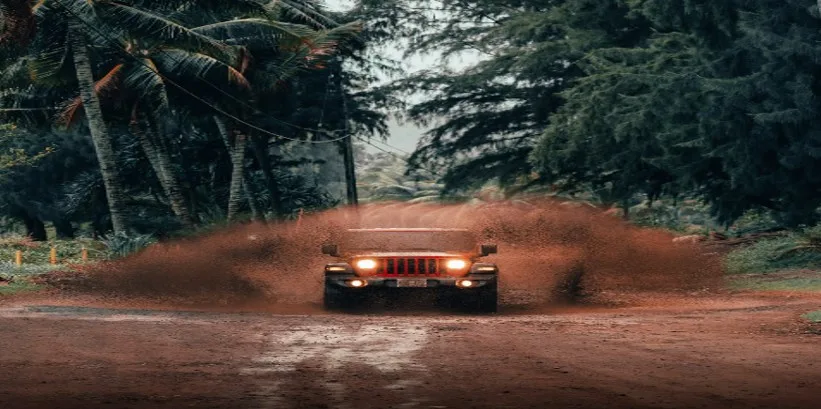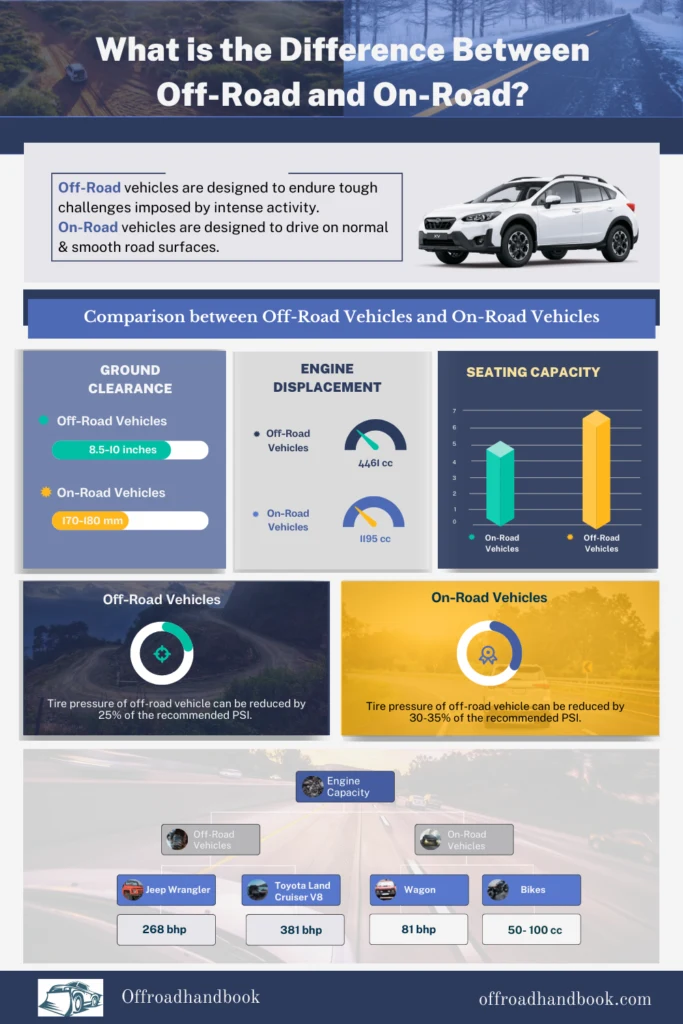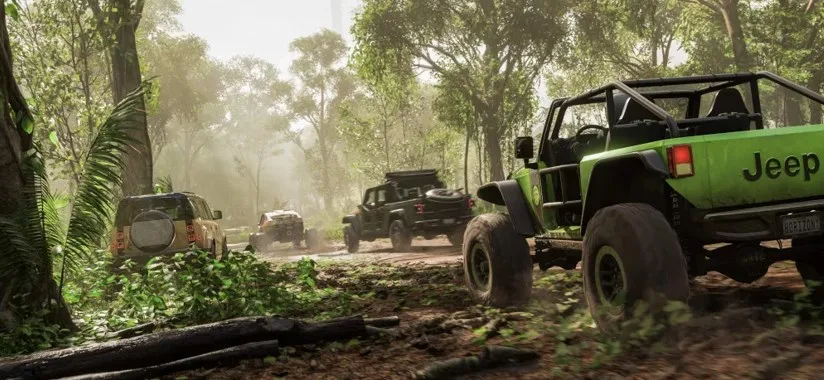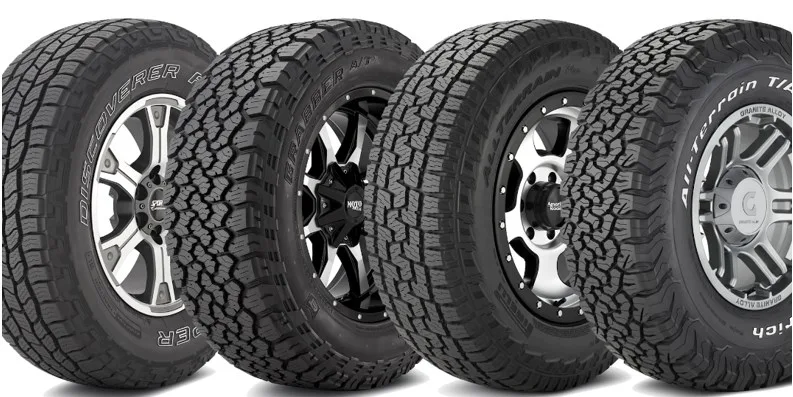This article will deeply analyze the difference between off-road and on-road. We need to understand that off-roading is not the same as on-road activity. What is the difference between off-road and on-road?
On-road manifests the normal highways. On-road driving is riding the vehicle on a comparatively smooth road surface. On the other hand, off-roading is an extreme activity where off-road enthusiasts drive their vehicle off the beaten path.
In this article, we will delineate the differences between off-road and on-road based on certain parameters, and these parameters include vehicle performance, selection of vehicle for an off-road and on-road drive, tires of the vehicle, ideal tire pressure for different terrains, ground clearance of vehicle, legal aspects, and suspension of the vehicle.
What is the Off-Road Activity?

When off-road enthusiasts drive their vehicle off the beaten path, it refers to off-road activity. Off-road activity is an intense activity that is not like normal driving. If you are an off-road enthusiast, you should comprehend the difference between off-road and on-road.
This knowledge will help you select the ideal vehicle for off-road and on-road activity. The scope of off-roading is not confined. You can do off-roading anywhere on mountains, dunes, and so many other places.
The selection of an off-road vehicle plays an important role in determining the fate of your journey. You can enjoy every bit of this activity if you pursue your journey with a proper vehicle.
Off-road vehicles vary in their features and specializations as compared to on-road vehicles. Off-road vehicles are specially designed to endure tough challenges imposed by this intense activity.
If you are an off-road enthusiast, you cannot ignore the importance of selecting vehicles for your off-road journey.
What is On-Road?

On-road refers to the normal highways. You can drive any vehicle on the normal path. It is not as extreme as off-road, so that you can take your normal vehicle with you.
But if you drive your vehicle recklessly, you can fall prey to major accidents you can not afford. Whether off-road or on-road, you should drive your vehicle carefully if you want to avoid any such unwanted incidents.
There are certain driving rules on normal highways, and you must abide by these rules. There are certain speed restrictions while driving your vehicle on normal highways. You need to follow these rules for safety purposes; otherwise, you can face legal proceedings.
We have created the infographic below that covers the differences betwen off-road and on-road. (You are welcome to use and share but please credit us if you do so.)

Off-Road Vs. On-Road: Based On Vehicles:

Off-road vehicles are adventure vehicles specially designed to tackle difficult situations. Off-road vehicles are capable of driving both off-road and on-road. Certain key specifications are associated with off-road vehicles.
The specifications associated with off-road vehicles include large tires with open tread and flexible suspensions. Off-road vehicles specifically include off-road SUVs, ATVs, trucks that are not suitable to run on normal highways.
On the other hand, on-road vehicles include vehicles capable of driving on normal highways, specially designed to drive on normal paths.
The Best Small and Mid SUV for Off-Roading in 2022- Best in Business
Off-road vehicles require a special type of modification for their efficient functioning; on the other hand, they do not require any special type of modification for their normal functioning. The production of off-road vehicles augmented in demand, and it can be depicted as follows:
Comparison on base of Key specifications: Off-Road vs On-Road:
Off-Road Vehicles | Key Specifications | Value | On-Road Vehicles | Key Specifications | Value |
Fuel Type | Diesel | Engine Displacement | 1195 cc | ||
Off-road vehicles SUVs ( Toyota Land Cruiser) | Engine Displacement | 4461 cc | On-road vehicles( Wagons) | Maximum Power | 81 bhp |
Number of cylinder | 8 | Fuel Tank capacity | 32 | ||
Seating capacity | 7 | Seating capacity | 5 |
Main Features of Off-Road Vehicles and On-Road Vehicles:
There are special features associated with both off-road vehicles and on-road vehicles. This article will analyze the difference between those main features and their efficient functioning.
Main Feature: Engine Capacity:
The engine of the vehicle is associated with horsepower production and generates torque.
As far as the engine capacity of off-road vehicles is concerned, it is specialized to produce maximum horsepower and torque to surpass the difficult terrains and situations imposed by off-roading.
The horsepower engines horsepower determines the vehicle’s performance and augments the vehicle’s speed that is necessary to surpass the steep routes during off-roading.
If you are willing to pursue an off-road trip with your friends and family, you should select the vehicle with maximum engine efficiency.
On the other hand, the engine of normal on-road vehicles, compared to the off-road vehicle, is not especially associated with magnificent features that boost their efficiency.
In normal on-road driving, you do not need to surpass difficult situations and challenges; thus the engine is not specially designed to produce maximum torque or horsepower.
Off-Road Vehicle | Engine Capacity (Maximum Power) | On-Road Vehicle | Engine Capacity (Maximum Power) |
Jeep Wrangler | 268 bhp | Wagon | 81 bhp |
Toyota land cruiser V8 | 381 bhp | Ordinary Bike | 50 CC to 100 cc |
Main Feature: Tires of Vehicles:

Tires are one of the most crucial components of vehicles that determines the vehicle’s performance, and you cannot ignore the importance of tires.
We have delineated the difference between off-road tires and on-road tires. Off-road tires are specially designed to pass through different difficult terrains such as mud, snow, and dirt.
The interlocking tread design of off-road drivers provides maximum durability to these tires. Auto tires are different from normal on-road tires because of their highly resistant sidewalls.
These highly resistant sidewalls of off-road tires prevent them from puncturing. Off-road tires, as compared to the on-road tires, last longer because of their sturdy sidewalls.
| Off-Road Tires | On-Road Tires |
|---|---|
| Nitto Ridge Grappler | Michelin |
| Cooper Discoverer AT3 4S | Good Year |
| Goodyear Wrangler DuraTrac | Cooper |
Off-Road Vs. On-Road: Based on Tire Pressure:
The ideal tire pressure of the vehicle depends upon the terrain.
As far as the tire pressure of off-road vehicles is concerned, the tire pressure of 15 PSI to 20 PSI is considered the ideal tire pressure.
But if you are driving your vehicle through dunes, you need to lower your tire pressure as much as possible. The tire pressure of 10 PSI can be considered the ideal tire pressure while passing through dunes.
It would help if you comprehended the importance of tire pressure for off-roading. The reduced tire pressure of off-road vehicles augments greater control comfort and traction.
You can reduce the tire pressure of your off-road vehicle by 25% of the recommended PSI. As far as the tire pressure of normal vehicles is concerned, you can maintain the tire pressure of about 30 to 35 PSI.
During normal highway drives, you do not need to drive your vehicle through difficult situations or terrain so you can maintain the ideal tire pressure of 30 PSI to 35 PSI.
What Tire Pressure for Off-Roading Is Suitable-Tune the Tire
If you are an off-road enthusiast and willing to take your family friends with you on an off-road trip, you need to know the mechanism of lowering tire pressure.
Off-Road Vehicle Tire Pressure | Impact | On-Road Vehicle Tire Pressure | Impact |
Tire pressure of off-road vehicles normally remains low than that of on-road vehicles. | Tire pressure remain low to provide better traction and grip. | On-road tire pressure remains normal and does not decrease. | On-road activities are not intense so normal tire pressure survives. |
Off-Road Vs. On-Road: Based On Ground Clearance:
Ground Clearance is another major crucial factor based on which we can differentiate the off-road and on-road activity. Ground clearance is the distance between the vehicle wheel and the ground. The excellent ground clearance for any off-road vehicle to perform better is 8.5 to 10 inches.
If you are an off-road enthusiast, you can select a vehicle with a ground clearance of 8.5 to 10 inches. Ground clearance is an important factor that ensures the safety of your off-road vehicles while passing through bumps.
On the other hand, as far as normal highways are concerned, you can take the vehicle with a minimum ground clearance of 170 to 180 millimeters with you.
You can increase the ground clearance of your vehicle by using lift kits. If you are an off-road enthusiast, you need to know the requirements for ground clearance for different terrain.
If you are willing to drive your off-road vehicle to gravel tracks, the minimum ground clearance ranges from 6.7 to 8.7 inches. It’ll help if you go for the selection of off-road vehicle that augments this minimum ground clearance.
But if you are willing to go for Overlanding, then the ground clearance requirement varies. The minimum requirement for the ground clearance of Overlanding ranges from 8.8 to 9.8 inches. You need to select the vehicle as per the required terrain.
What is a Good Ground Clearance for Off-Roading? Know in Detail
The wrong selection of vehicles during an off-road journey could cause serious damage. Ground clearance of above 10.8 inches is required if you are willing to go for rock crawling.
| Ground Clearance of Off-Road Vehicle | Ground Clearance of On-Road Vehicle |
|---|---|
| For any off-road vehicle to perform better, it is necessary to have the ground clearance range between 8.5inches to 10inches respectively. | Ground clearance is not as much important for normal drive but it should range from 170mm-180mm |
Off-Road Vs. On-Road: Base On Legality:
Off-roading is an intense activity, but it cannot be considered illegal. But there are certain restrictions that you need to follow as an off-road enthusiast.
You should understand that off-roading is an activity that is not limited to any specific talents or routes. But there are certain restricted areas as well. You need to know that there are certain situations where this intense activity can consider illegal.
It is legal if you are driving your off-road vehicle through your property. But if you are driving your off-road vehicle through a restricted area, you can face legal consequences.
Restricted areas such as Gray areas are considered sensitive, so you cannot drive your off-road vehicle through these Gray areas.
On the other hand, as far as the issue of legality is concerned, road drive is legal. You can’t drive your normal road vehicle on any highway, but you need to follow certain rules as prescribed by the government.
We can conclude that both of these activities are legal but with certain restrictions that need to be followed. The local government imposes these restrictions, and they vary from area to area, country to country.
If you are driving your vehicle in the USA and UK, you will face different restrictions in these countries. If you are an owner of an ATV, you need to comprehend that you are not always allowed to drive your ATV in any National Park without necessary permissions.
Is Off-Road Driving Legal? Know the Vehicle Compliance
Off-Road Vs. On-Road: Based On Suspension:
The suspension of any vehicle is necessary for three main purposes. One of the major purposes that you need to comprehend about a vehicle’s suspension is that it keeps the tire touching the ground.
For this very reason, quality suspension is required to provide better traction and grip. Another major purpose of any vehicle’s suspension is to clear the bumps.
The quality suspension system determines the performance of off-road vehicles, and the suspension system is crucial for off-road vehicles. The stability of a vehicle during an off-road journey is also associated with the vehicle’s suspension system.
If you are an off-road enthusiast, you must use stiff suspension because it provides better handling and grip. You should know about the three major types of suspension, and these three types of suspension include linkages, shock absorbers and springs.
But if you’re willing to drive the normal vehicle on normal highways, then the suspension system is not that important. You can use any suspension system, but it should work properly.
But as far as off-roading is concerned, you need to select quality suspension systems such as ECCPP Air Suspensions Shock Absorber.
What Type of Suspension is Best for Off-Roading?
Off-Road Vs. On-Road: Impact on Environment:
As a citizen, you need to comprehend the impact of off-roading and on-road activity on the environment. You need to understand that environment is not the matter of any single state. It impacts the whole globe. Off-roading has hazardous impacts on the environment as compared to on-road drive.
Off-road vehicles are designed so that they prove to be deadly dangerous for ground maintenance. Off-road vehicles are notorious for turning up the soil and causing soil erosion.
Off-roading is an extreme activity that can disturb the vegetation system of various areas. If you are an off-road enthusiast, it is your responsibility to take care of all these situations. The extreme activity of offloading can disturb the quality of water and aquatic life.
But as far as normal driving is concerned, certain ailments are associated with normal driving, but their impacts are not as extreme as off-roading.
As a responsible citizen, you must use quality diesel. Noise pollution is a major problem associated with the use of vehicles.
Is Off-Roading Bad for The Environment? Impact and Mitigation
The consumption of carbon dioxide can be deadly dangerous for global warming. It is the government’s responsibility to take certain initiatives to control the consumption of carbon dioxide and other hazardous gasses.
Final Thoughts:
So we can conclude that there are differences between the on-road and off-road based on several factors. The requirements for off-roading are different from on-road activity.
Off-roading is an extreme and intense activity, so the driver’s experience is also an important factor in determining the fate of your off-road journey. If you are an experienced off-road enthusiast, you can better handle tough and pressure situations.
If you pursue your off-road journey by selecting a proper vehicle, you can enjoy this exciting activity.
Also Read:
Top 5 Ways to Damage Your Car while Off-Roading and Recovery
Essential Off-Road Accessories for Trucks
Frequently Asked Questions (FAQs):
Can you use off-road tires on the highway?
Off-road tires are often recognized by their open trade design. The wide tread design of off-road tires makes them the best choice for all terrains. You need to understand the importance of open and wide tread design of off-road tires.
While driving your vehicle through rough terrain or any rocky path, your vehicle should have a strong grip. The wide trade design of your off-road tires augments the better gripping power.
But you need to understand that when you’re driving your vehicle on the highway, the situation is different. While driving your vehicle through the highway, you will not face any difficult situation, such as often offered during the off-road trip.
The off-road tires have different tread designs in the different interlocking systems, and these features enable them to handle any situation in any terrain.
What makes a car good off-road?
If you are an off-road enthusiast, you should understand the importance of off-road vehicles and their main features.
Off-road vehicles are often known as four-wheel drive vehicles because of their four wheels. All the wheels of off-road vehicles are equally powered to surpass difficult situations during the off-road journey.
The proper vehicle for off-roading should contain the necessary features dad suits off-roading. These features include maximum ground clearance, maximum engine capacity to generate and produce torque and horsepower, and tires’ size.
As you know, dad off-roading is not a normal activity, so you need to modify your vehicle to surpass off-road challenges. It is advisable to use quality tires to maintain tire pressure and scrutinize your vehicle’s ground clearance before proceeding with the journey.
You can enjoy the fun of the whole journey if you are pursuing your off-road trip by selecting the right vehicle.
Are off-road tires good in the rain?
If you are pursuing your off-road Gen journey with the murder in tires, you should understand that mud terrain in tires is not ideal for dealing with situations such as rain.
You should follow the general rule of thumb in selecting off-road tires. If you are going to pursue your off-road journey with all-terrain tires, then it could be the best option compared to the mud-terrain tires.
You need to know that matter and tires are inefficient in performing on wet pavement. The selection of mud terrain tires while passing through those situations where their chances of rain can prove deadly dangerous because mud-terrain tires are prone to aquaplane.
Can you go off-road with street tires?
Street tires are capable of performing well during dirt and gravel situations. You cannot go wrong with the selection of street tires for off-roading. Street tires are very much capable of performing well during off-road situations.
But there are small disadvantages associated with street tires, and these disadvantages include the loss of grip and traction.
Suppose you have a choice between street tires and mud-terrain tires. You need to go with street tires because mud-terrain tires are not equally well. Due to their special features, Street tires can surpass or outclass mud-terrain tires during difficult situations.

This is Surya. I am an experienced off-roader. I have been off-roading for many years across several terrains. I am passionate about 4×4 driving and want to share my knowledge and experience with others.
My goal is to provide you with the most comprehensive and unbiased information about off-roading.
I curated this article through my personal experience and expertise, and I hope it helps you with what you are looking for.


 (+91)9123743026
(+91)9123743026
 24/1 Nibedita Sarani. M.B. Road, Kolkata- 700051, India
24/1 Nibedita Sarani. M.B. Road, Kolkata- 700051, India